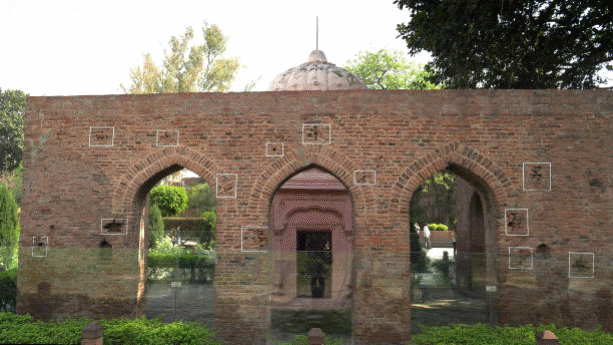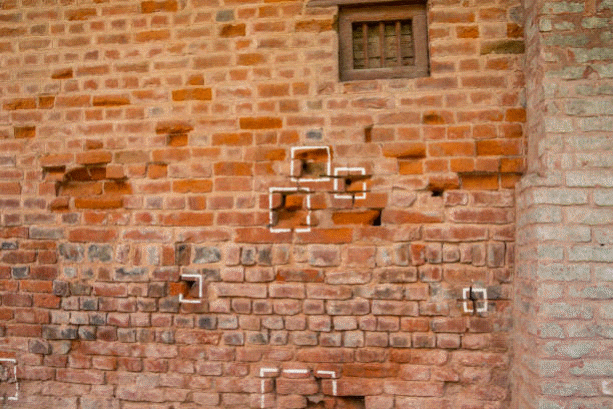Jallianwala Bagh
The notorious Jallianwala Bagh massacre is one of the few events in our subcontinent's history that is both disgusting to recall and crucial to history. One of the worst episodes in the history of the Indian struggle for independence was the cruel, cold-blooded murder of 500–600 nonviolent demonstrators at the hands of British imperialism.
About about Jallianwala Bagh
On April 13, 1919, a number of nonviolent protesters were murdered in a restricted park with just one escape during the Jallianwala Bagh massacre. The Government of India built a memorial in 1951 to honor the souls of all the innocent persons killed in this catastrophe. In order to present an accurate history of the tragedy, the Yaad-e-Jallian Museum opened in March 2019.

In that it permanently damaged Indo-British ties and served as a forerunner to Mohandas (Mahatma) Gandhi's complete devotion to the cause of Indian nationalism and independence from Britain, it served as a turning point in modern Indian history.
History of Jallianwala Bagh
As the British Crown and state gained control of the British East India Company's assets in 1858, the British Raj (rule) of India officially began (EIC). The violent Sepoy Mutiny of 1857-8 had been put down as the EIC's final deed. The brutality committed by both sides during this insurrection against colonial control left a lasting effect, especially on the British who always worried that another outbreak might easily take place. The India that the British dominated was not at all unified. Political maps, where Indian princely kingdoms had varying degrees of dependency or neutrality, show the boundaries of the nation.


Hindus, Muslims, and Sikhs represented the three major religious groups that existed at the time. Also, there existed the caste system and a widening economic gap between nations and populations. Many Indians found jobs in the British Indian Army and the public sector, making the distinction between colonists and subject peoples far from clear-cut. The British Empire's greatest struggle was clinging to this mutable mashup of cultures. India was the crown jewel of the British empire, and utilizing its riches without inciting an open uprising was a delicate balancing act.

There were signs that Indians were warming up to the concept of organized and united political action, and many conservative Britishers were fixated on the possibility that rebellions might erupt. Both the All-Indian Muslim League and the India National Congress were established in 1885 and 1906, respectively. Bengal was divided in 1905, which greatly incensed nationalists (it was reversed in 1911). When mass-based politics took off in the first decade of the 20th century, more and more Indians began to oppose the British occupation of their country. The Lucknow Pact, signed in 1916 by the Congress and Muslim League, outlined what was thought to be the essential constitutional reforms to enable an independent Indian government.
The Massacre At Jallianwala Bagh

The day before, Amritsar's interim military commander, Reginald Dyer, issued a statement prohibiting any public gatherings. His local intelligence informed him that there was a public gathering going on in the Jallianwala Bagh. He arrived at the Jallianwala Bagh with his soldiers and secured all of the exits.

He gave the order to fire at the unarmed mob by arming his soldiers with firearms. Many were trying to climb out of the Bagh as there was utter mayhem among the audience. 150 corpses were reportedly pulled from the well in the Jallianwala Bagh's middle. The gunfire lasted for ten to fifteen minutes until ceasing when the ammo ran out.

In the turmoil, there were many fatalities from the stampede, while many more perished from their injuries because they were unable to receive medical care while under martial law. 1,650 shots were fired in all, resulting in more than 500 fatalities and three times as many injuries. Men, women, elderly people, and babies as little as seven months old were among the deceased. It is estimated that there have been 500 fatalities overall and 1500 injuries.
The Jallianwala Bagh Massacre's Historic Significance

The Jallianwala Bagh Massacre is regarded as the most tragic episode in the history of the Indian Independence Struggle. If there is any good to come out of this killing, it is that it exposed how intolerant and racially prejudiced the Brits were towards Indians. Many people were outraged when the imperialist British oppression was revealed.
Many moderates lost faith in the British, especially after seeing how the criminals almost got away with it. The Hunter Commission was established to look into the killings. Nonetheless, the guilty were not subject to harsh punishment. Reginald Dyer, the massacre's primary culprit, was only fired from his army job, denied a promotion, and prohibited from working in India; no trial was held as a result. In 1920, he was let go from his position.
He passed away in 1927 after succumbing to illness. Similar to how it gave birth to many other youthful freedom warriors who later fought for India's independence. On August 15, 1945, the British were forced to renounce their sovereignty over India, which they had hoped to govern for centuries, as a result of their valiant effort and sacrifice. Our future generations will be taught to fight injustice by being reminded of this awful period of history.
Consequences of the Jallianwala Bagh Massacre
The British public's adulation and appreciation of General Dyer, the perpetrator of the atrocity, destroyed any illusions about the British government's benign control over the country. The savagery of the slaughter stunned the whole country. Gandhiji stopped his trip on April 18 after becoming overwhelmed by the environment of violence. Mahatma Gandhi rejected the title Kaiser-i-Hind, which the British had given him in recognition of his assistance during the Boer War. Rabindranath Tagore, a Nobel Prize-winning poet, declined to accept the honor. Winston Churchill called the shooting "monstrous," and he decried it.
The confidence in British justice was damaged as a result of Jallianwala Bagh. The Hunter commission committee was constituted by the Indian government on October 14, 1919, to look into the happenings in Punjab. The group was tasked with investigating the unrest in Punjab, identifying its causes, and coming up with ways to minimize its effects. The commission's conclusions state that General Dyer's actions were harshly denounced but that nothing was done to hold him accountable. The Jallianwala Bagh massacre sparked an uprising against the peculiar colonial laws.
Conclusion
The British government of India passed the Rowlatt Acts in 1919, extending its post-World War I crisis authority to thwart revolutionary action. The Jallianwala Bagh is an open area in Amritsar, Punjab, where many people gathered on April 13 to protest the restrictions. When the British soldiers opened fire, 379 people were killed and another 1,200 were injured. The massacre damaged India-Britain relations severely and served as a prelude to Mahatma Gandhi's noncooperation movement of 1920–1922.


















